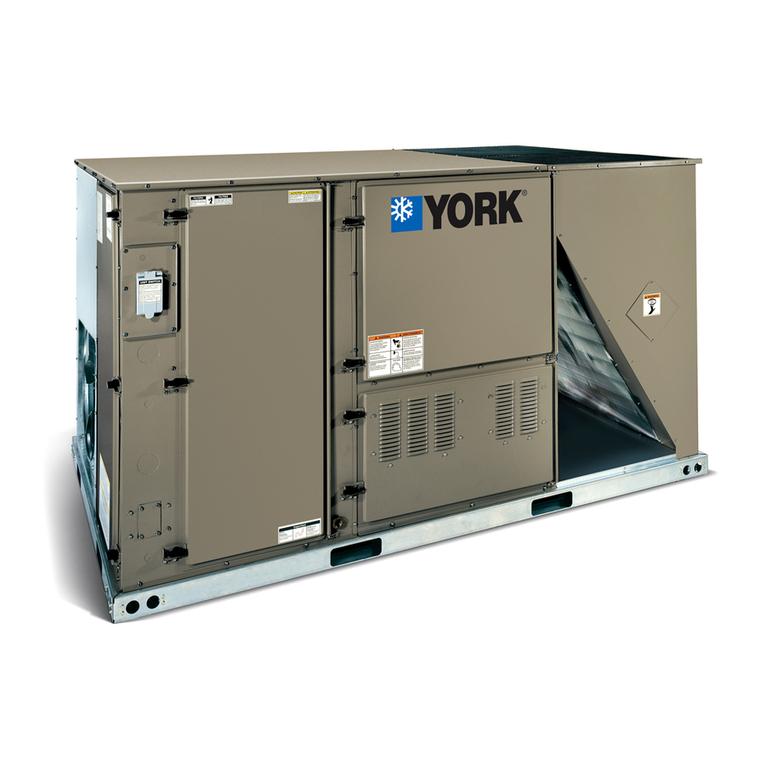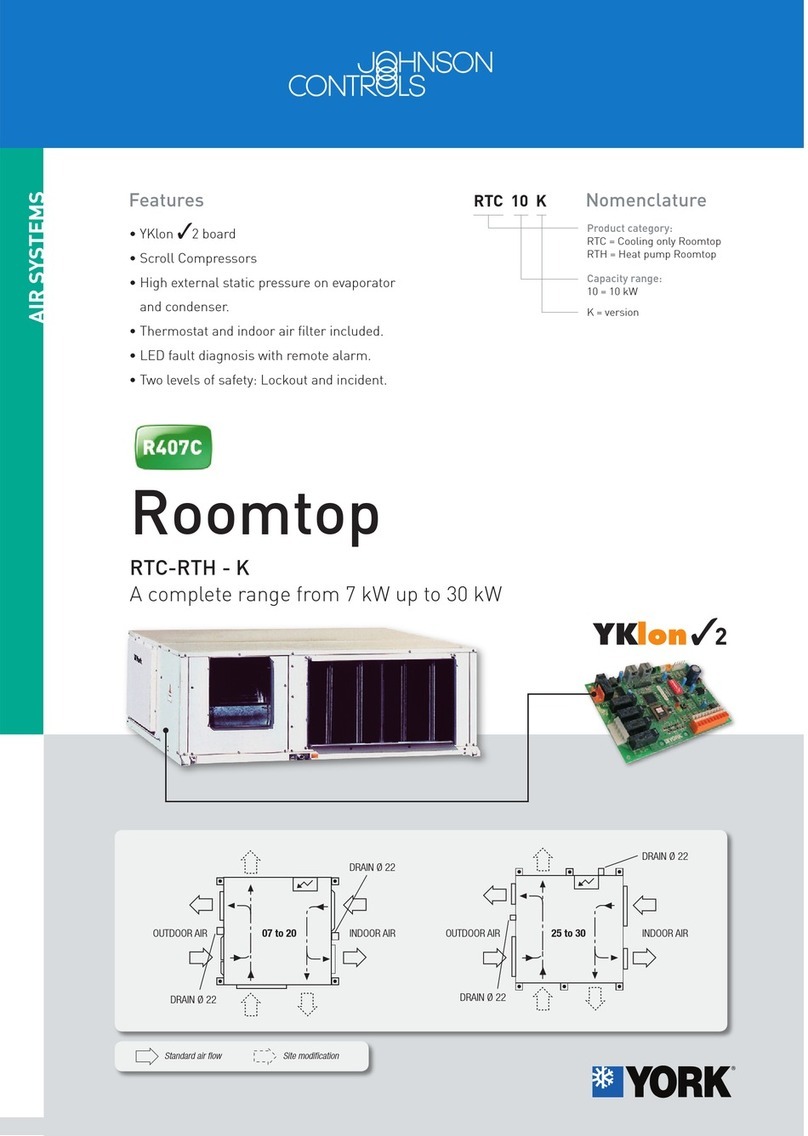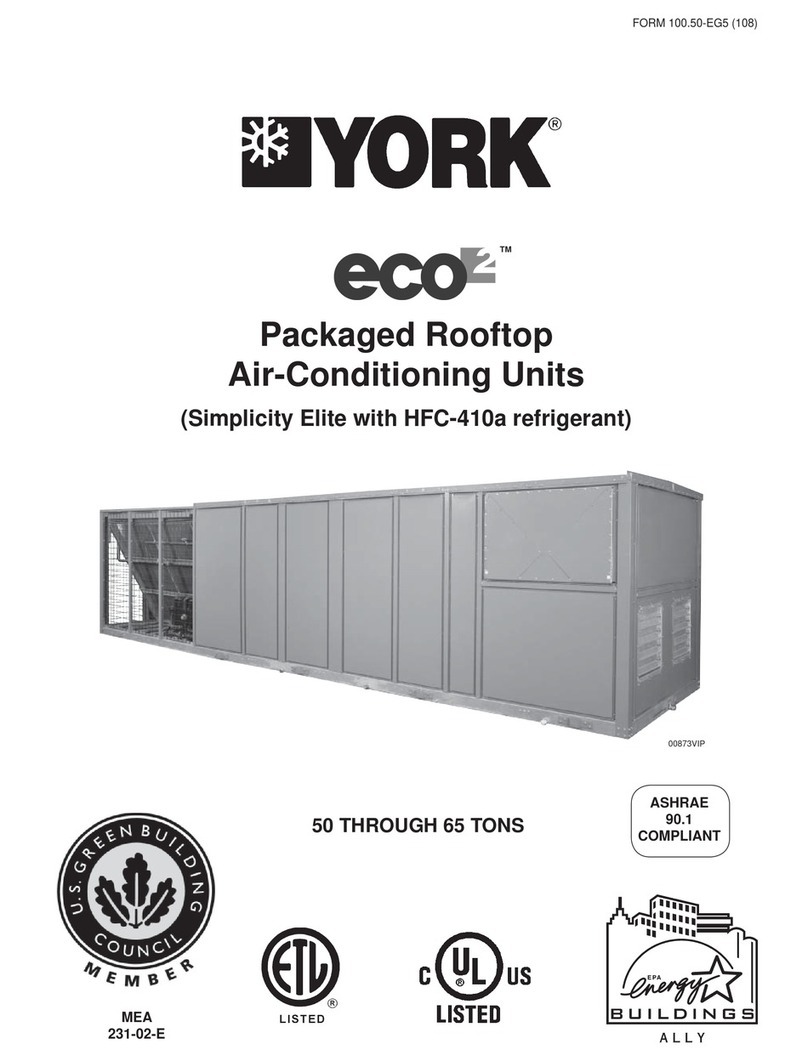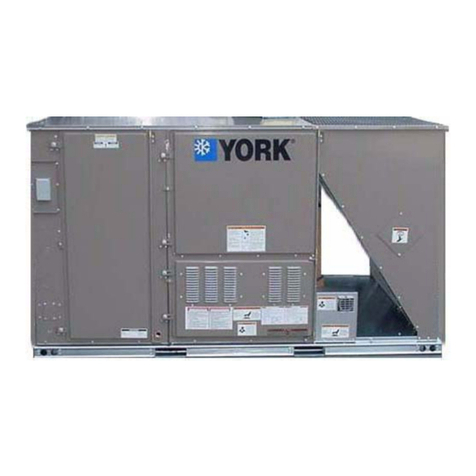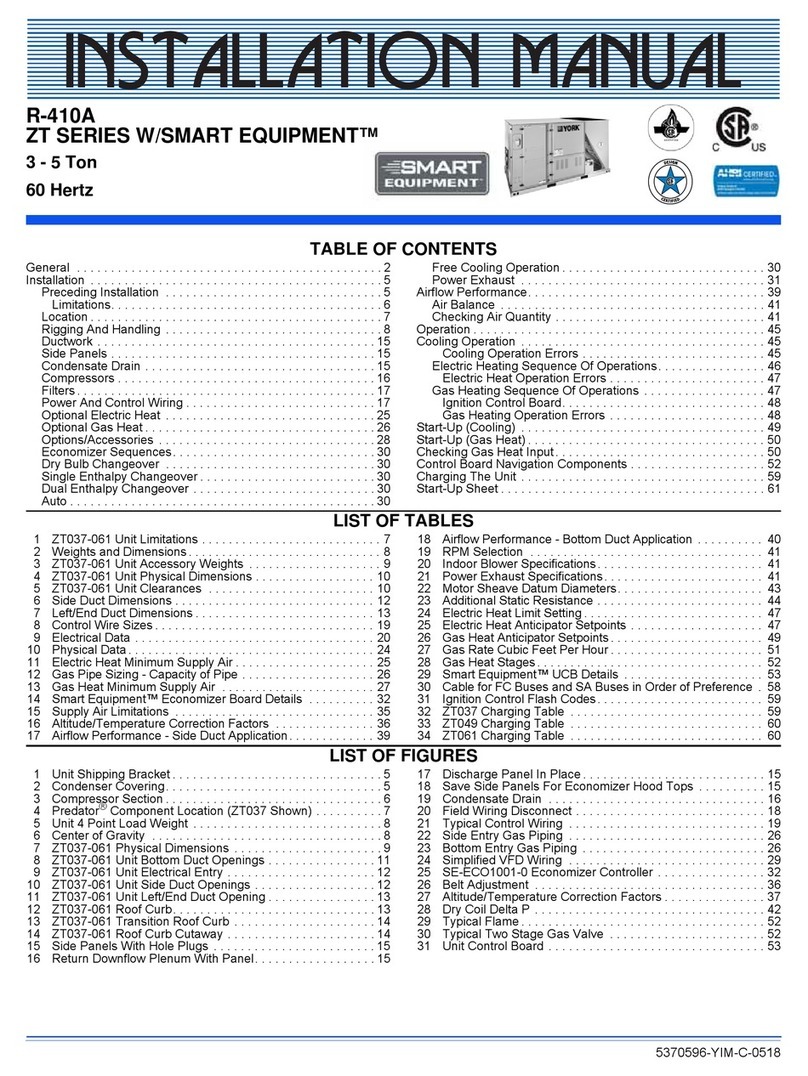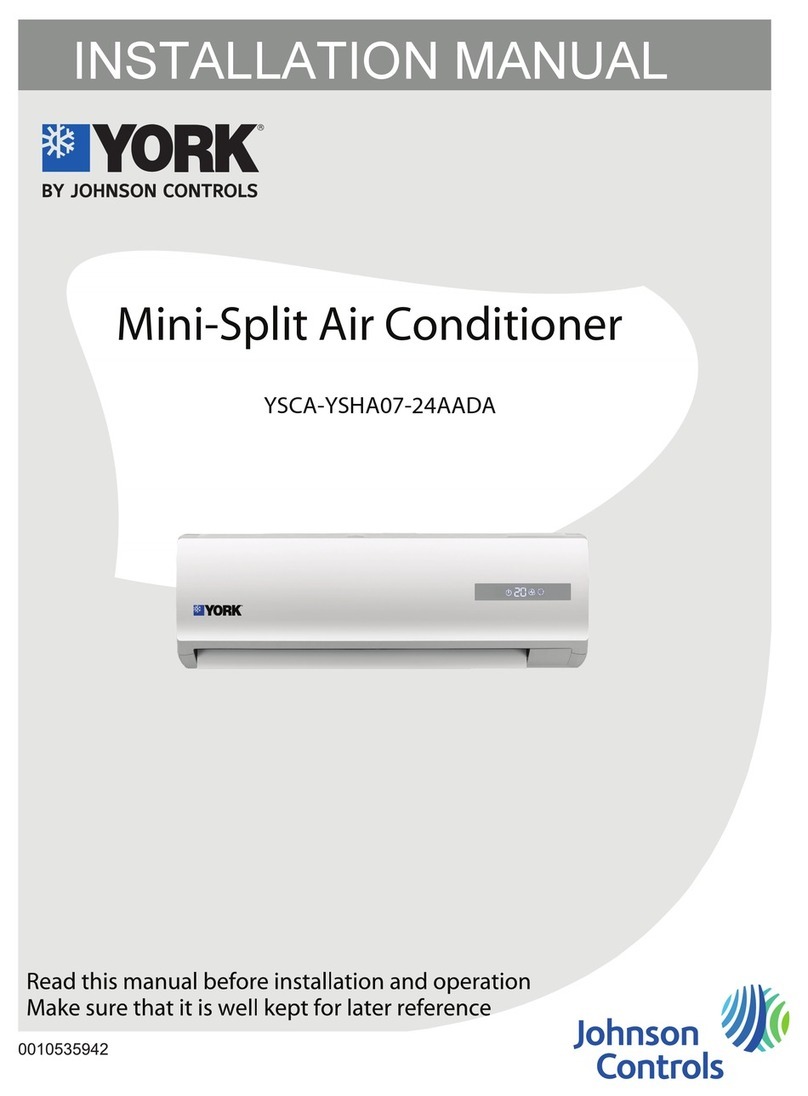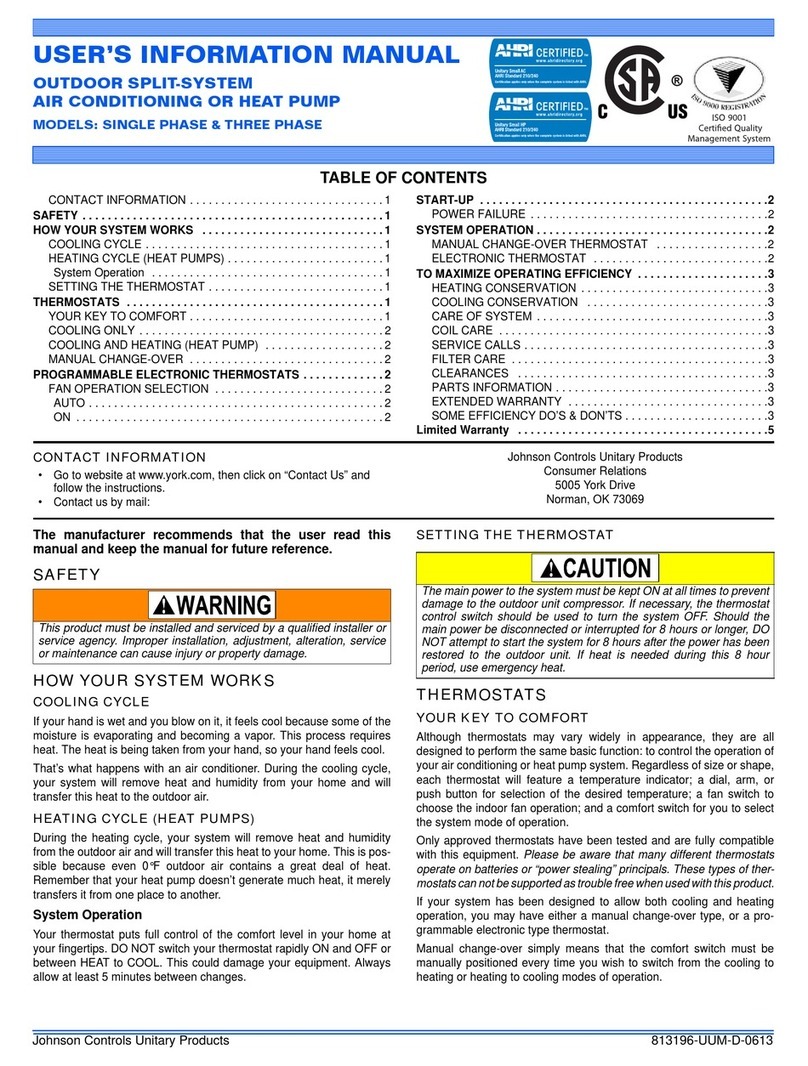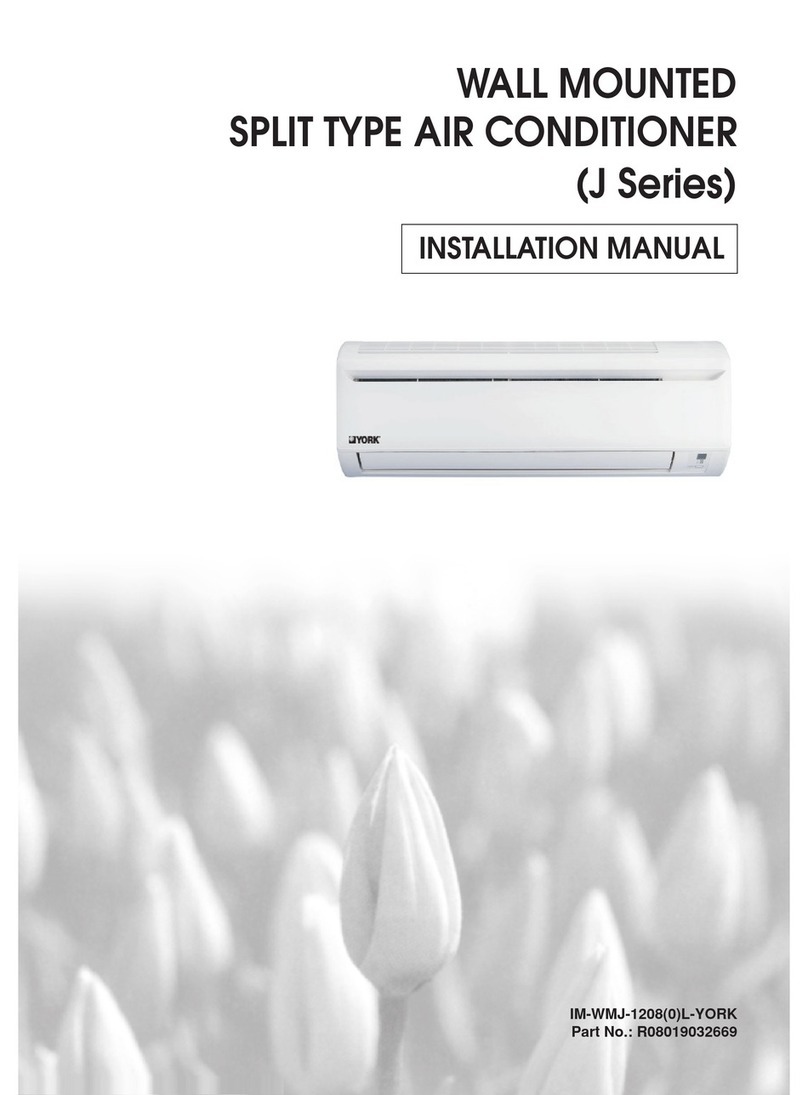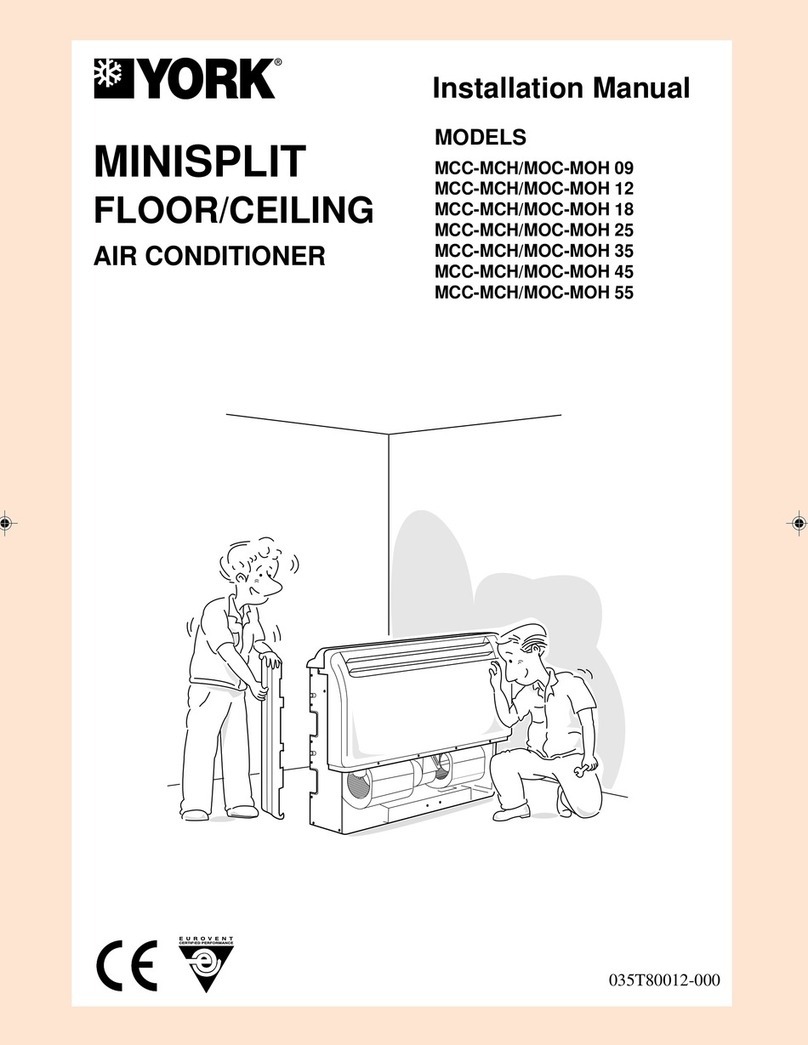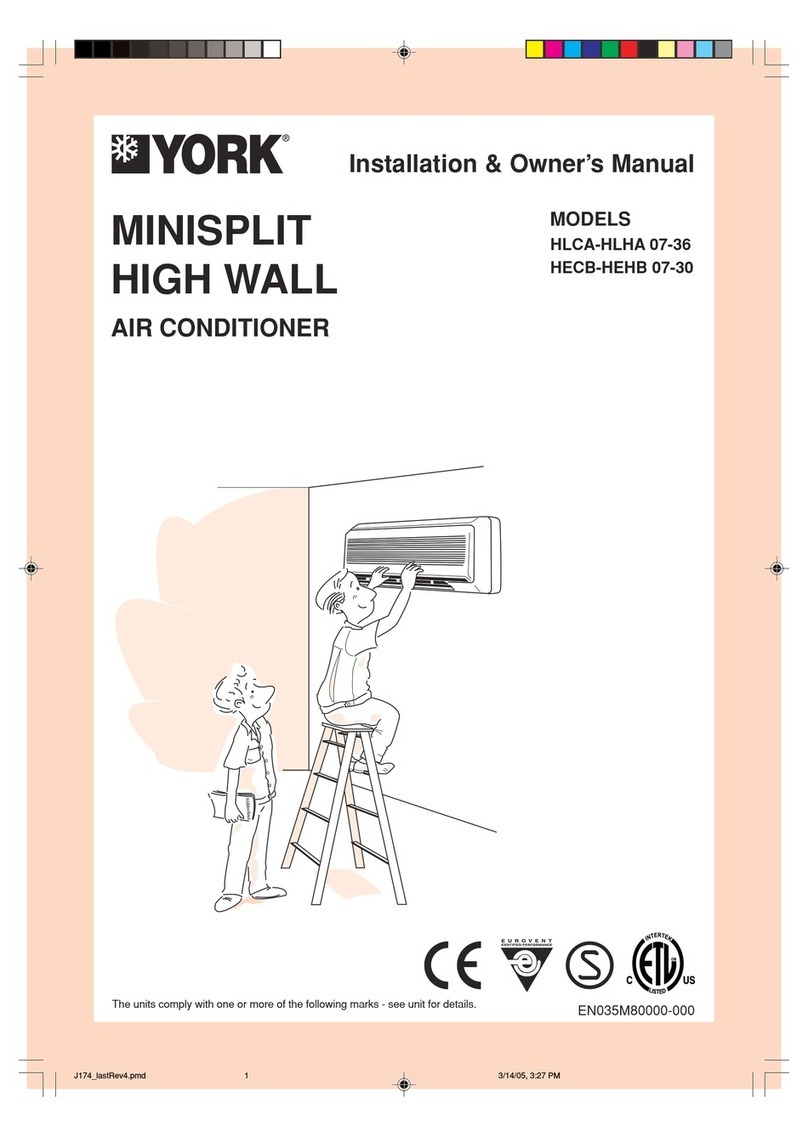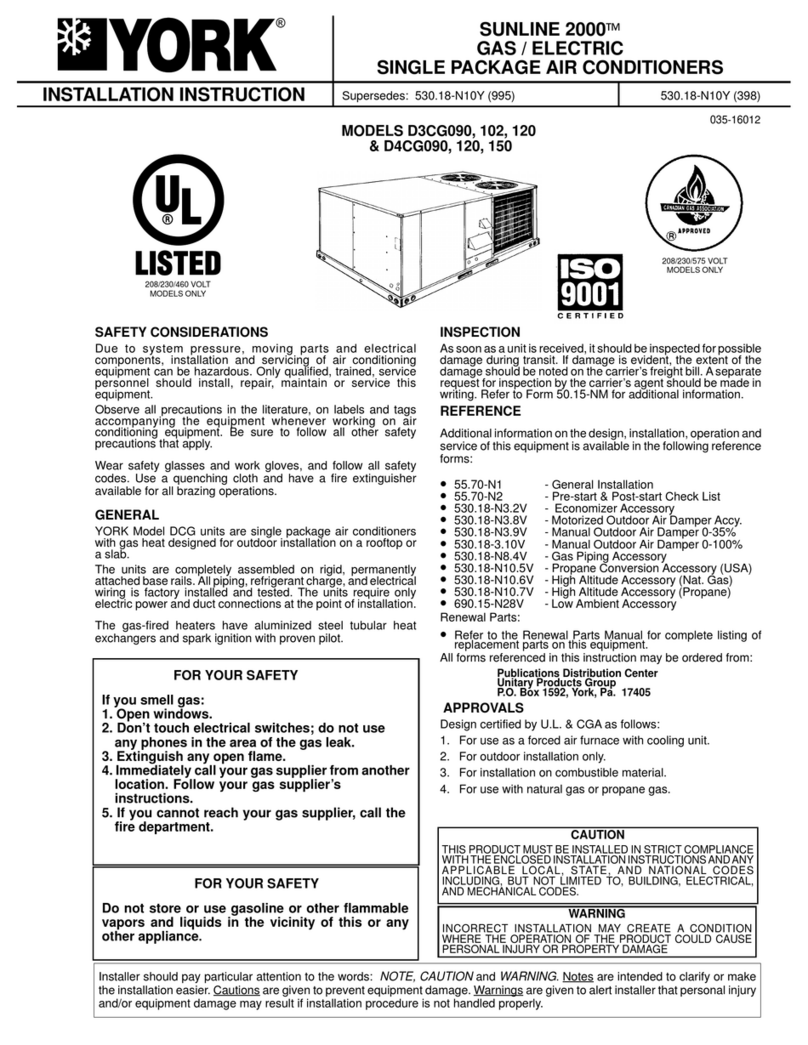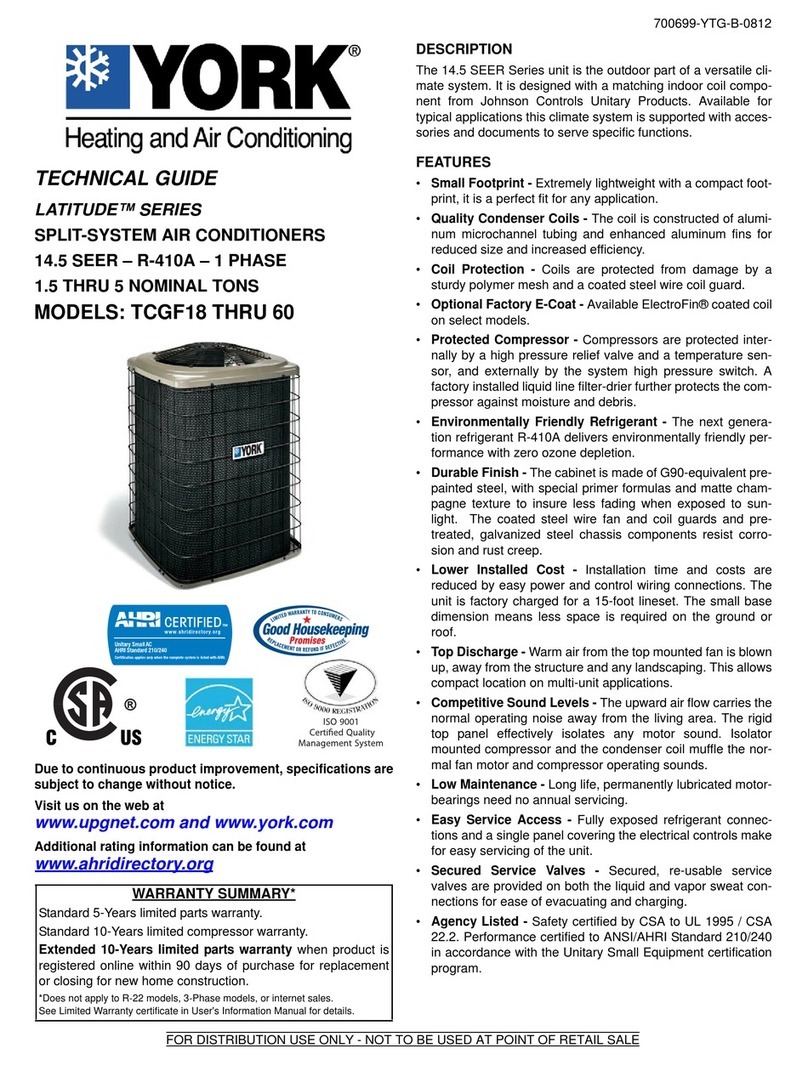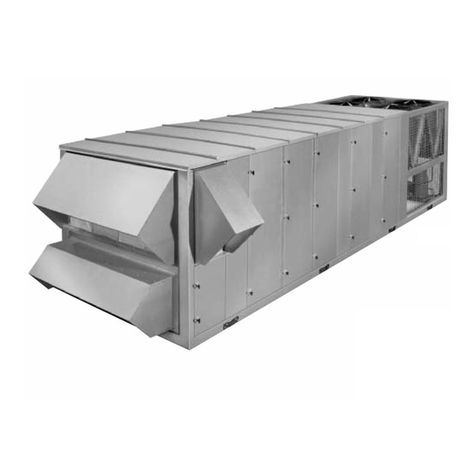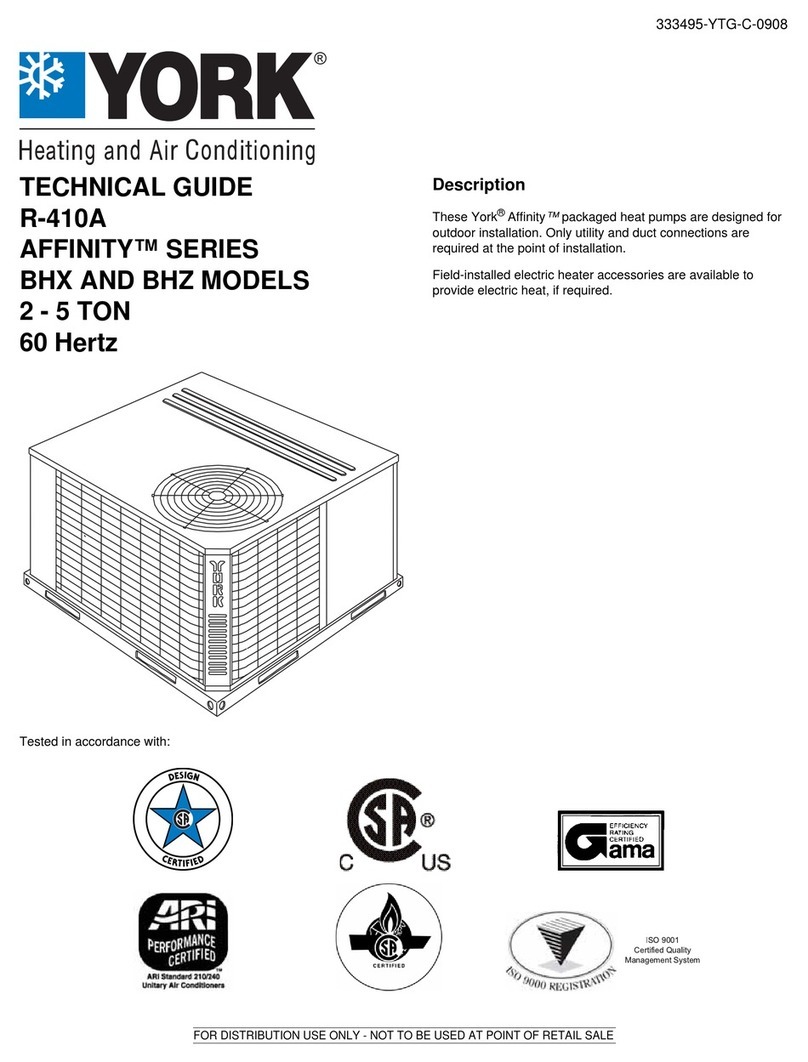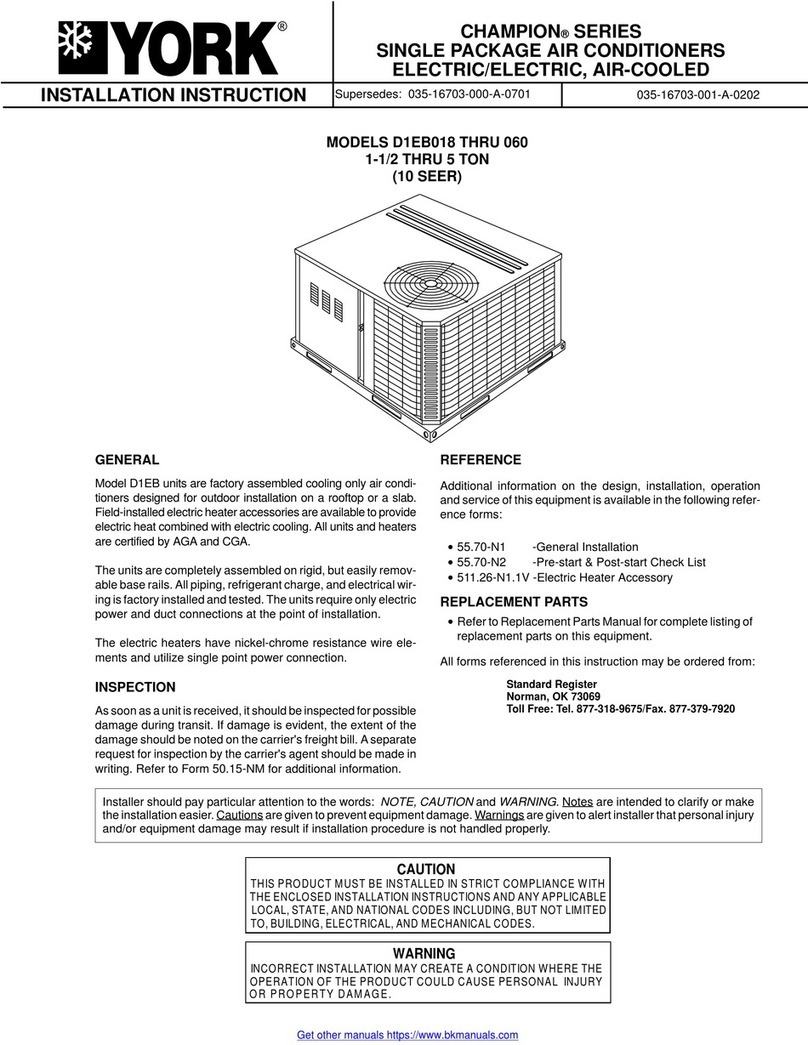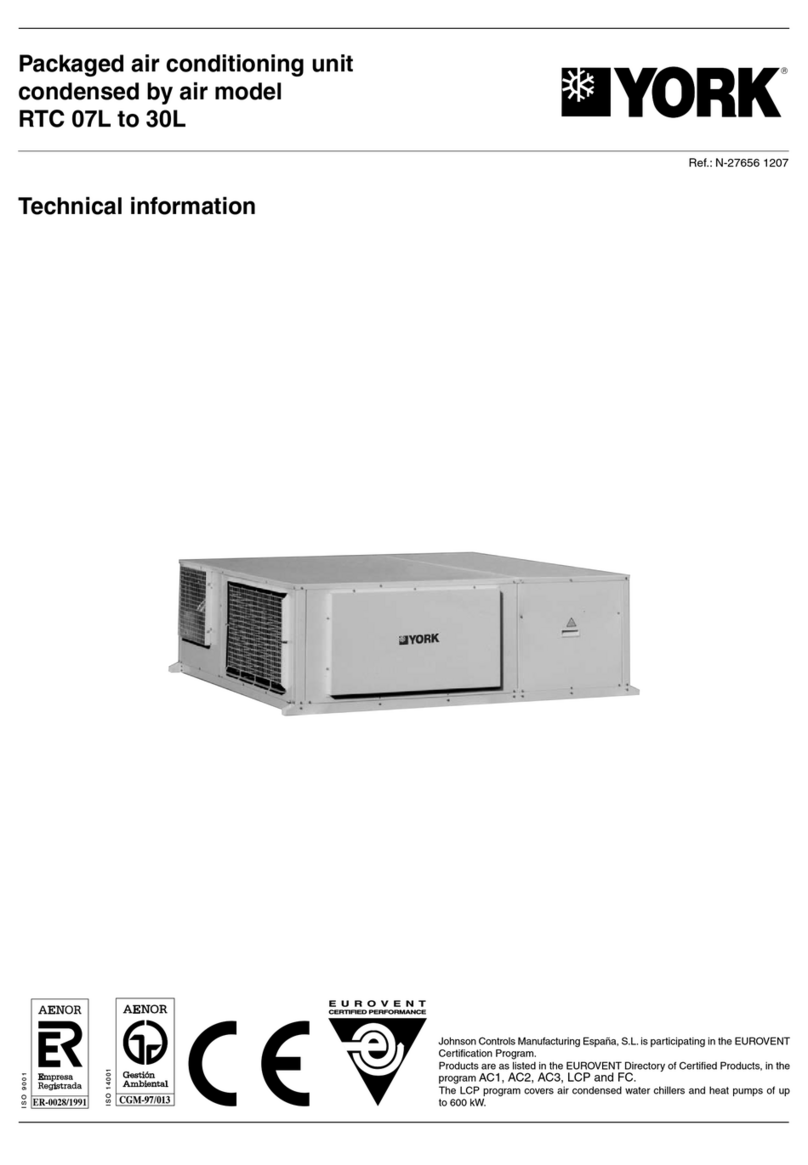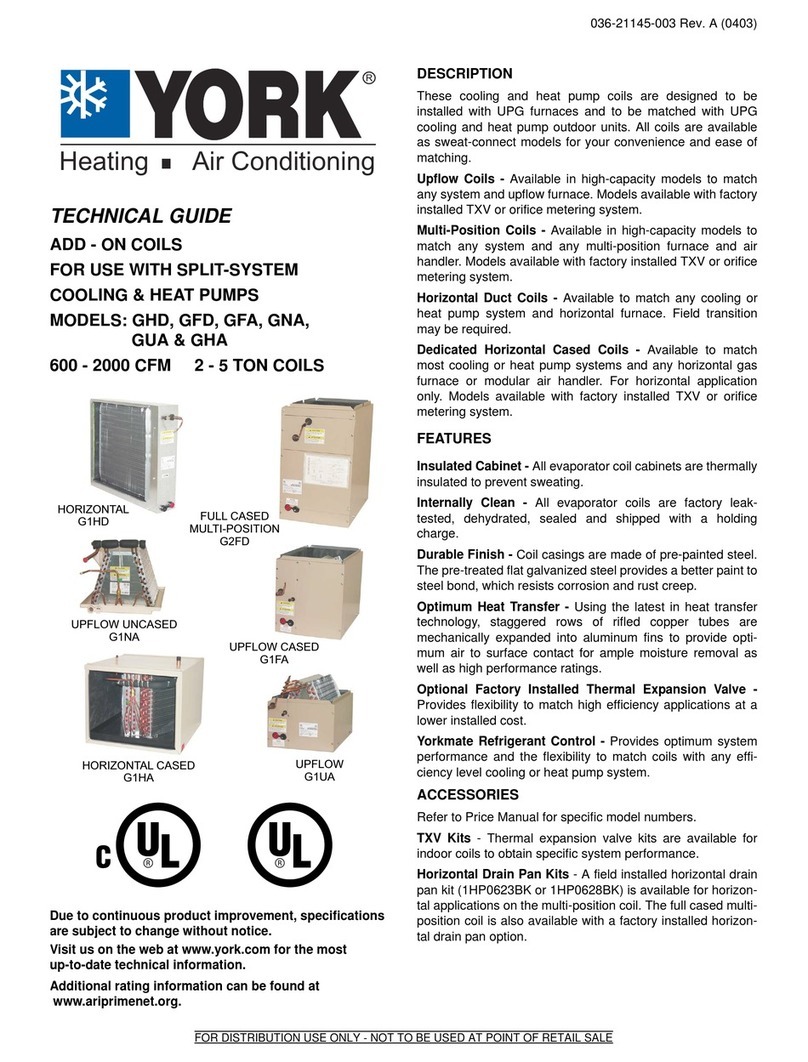
035-13329-001-B-0504
Unitary Products Group 7
Refer to Figure 6 for typical field wiring and to the appropriate
unit wiring diagram for control circuit and power wiring infor-
mation.
COMPRESSORS
On some units the compressor is mounted on springs which
have been tightened down for shipment only.
After this unit is installed, back out the compressor bolts until
the sleeve clears the top grommet.
.
OPTIONAL ECONOMIZER RAIN HOOD
The following procedure should be used when assembling an
economizer rain hood onto a unit. Refer to Figure 3. The out-
door and return air dampers, damper actuator, the linkage
and all the controls are factory mounted as part of the econo-
mizer option.
All of the hood components, including the filters, the gasket-
ing and the hardware for assembling are located above the
top filter racks within the filter section. The outdoor air sensor
is in the bag of parts located at the bottom of the return air
section.
1. With filter section access panel removed, take out hood
components, filters and sensor described above.
Remove and discard outdoor air opening cover on back
unit (Upper right hand corner).
2. Remove the 1/2" knockout (A) in the units rear panel
(located to the right side of the outdoor air opening).
Insert the two loose wires from inside the unit, into the
1/2" bushing provided. Insert wires and bushing into
knockout. Snap bushing into place.
3. Mount the outdoor air sensor to the rear panel, just
below the knockout described in Step 2. Secure with two
self-drilling screws at dimples (B) provided in the panel.
NOTE: Sensor must be positioned so that the sensing ports
are at the top (louvers pointing downward) and ter-
minal connections to the right.
4. Connect the two wires, indicated in Step 2, to the sensor
as follows:
• Wire #73 to terminal (+)
• Wire #74 to terminal (S)
5. Assemble the LH and RH side plates to the top cover (2
screws each side) to form the hood. Apply gasketing to
the flange surface on each side plate. Extend gasketing
1/4" beyond top and bottom of each flange to insure
adequate corner sealing. Secure this assembly to the
unit back panel (upper right hand corner). First, remove
screw (C) on unit top cover. Then slip flange of hood
cover in under flange of unit top cover, replace screw
(C), engaging hole (E) in hood flange and tighten. Attach
the two side plates to the unit panel by using two self-
drilling screws for each side plate at dimples (D) pro-
vided in the panel.
6. Position fillpiece at bottom of hood, between the two side
plates but do not secure at this time. (Slotted openings
MUST be downward for drainage). After fillpiece is prop-
erly positioned, note where contact is made with the unit
panel.
Remove fillpiece and apply gasket material to this area
to provide a seal. Reposition fillpiece and secure with 2
screws.
TABLE 1: PHYSICAL DATA
MODELS DHE
036 048 060
EVAPORA-
TOR
BLOWER
CENTRIFUGAL BLOWER (Dia. x Wd.
in.)
FAN MOTOR HP
12 x 10
1.5 12 x 10
1.5 12 x 10
1.5
EVAPORA-
TOR
COIL
ROWS DEEP 4 4 4
FINS PER INCH 13 13 13
FACE AREA (Sq. Ft.) 4.3 5.1 5.1
CONDENSER
FAN PROPELLER DIA. (in.) 24 24 24
FAN MOTOR HP 1/2 1/2 1/2
NOM. CFM TOTAL 4,500 4,200 4,200
CONDENSER
COIL ROWS DEEP 2 2 2
FINS PER INCH 18 18 18
FACE AREA (Sq. Ft.) 17.1 17.1 17.1
AIR FILTERS
(SEE NOTE) QUANTITY PER UNIT(15" x 20" x 1") 2 2 2
QUANTITY PER UNIT(14" X 25" X 1") 1 1 1
TOTAL FACE AREA (sq. ft.) 6.6 6.6 6.6
CHARGE REFRIGERANT 22 (lbs./oz.) 10 / 8 10 / 4 10 / 14
COMPRES-
SOR QUANTITY PER UNIT (HERMETIC-
TYPE) 1 /
RECPT 1 /
RECPT 1 /
RECPT
WEIGHTS (LBS)
Basic Unit
3 Ton 565
4 Ton 610
5 Ton 645
ACCESSORIES / OPTIONS
Electric Heat
(Nominal KW) 5 - 7 KW 18
10 - 15 KW 23
20 - 30 KW 28
Economizer 50
Motorized Outdoor
Air Damper 26
Relief/Fixed
Air Damper 10
Roof Mounting Curb 92
Do Not loosen compressor mounting bolts.
